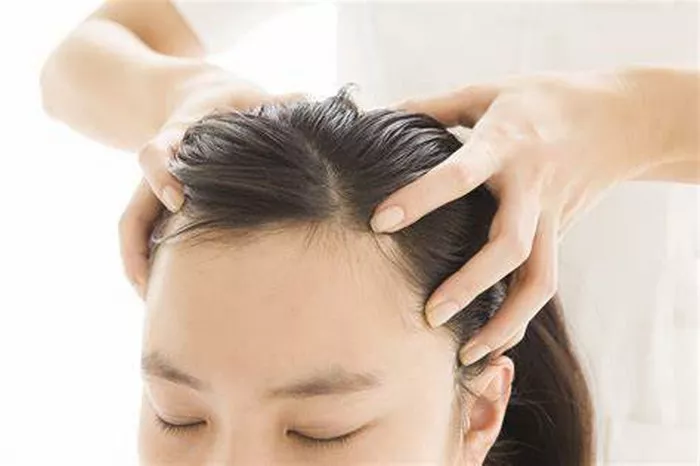The health of your hair is often influenced by the condition of its cuticle, the outermost layer that protects the inner structure. When the cuticle is damaged, it can lead to a range of issues, including dryness, frizz, and breakage. Many individuals wonder if it’s possible to repair the hair cuticle and restore hair to its former glory. This article explores the structure of the hair cuticle, the factors that can cause damage, and effective strategies for repair and maintenance.
Understanding the Hair Structure
Before diving into cuticle repair, it’s essential to understand hair anatomy:
Cuticle: The outer layer made up of overlapping scale-like cells. It protects the inner layers and contributes to hair’s shine and smoothness.
Cortex: The thickest layer, providing strength, color, and texture.
Medulla: The innermost layer, found in some hair types, contributing to overall hair structure.
The cuticle plays a crucial role in overall hair health. When it’s intact, it helps keep moisture in and protects against environmental damage.
Causes of Hair Cuticle Damage
The hair cuticle can become damaged due to various factors, including:
Chemical Treatments
Coloring: Hair dyes, especially those containing ammonia, can lift the cuticle scales, leading to dryness and brittleness.
Perming and Relaxing: These processes can significantly alter the cuticle, leaving hair vulnerable to damage.
Heat Styling
Frequent use of heat styling tools (like curling irons and straighteners) can cause the cuticle to become porous, leading to loss of moisture and structural integrity.
Environmental Factors
Sun Exposure: UV rays can degrade the cuticle, leading to discoloration and dryness.
Pollution: Environmental pollutants can settle on the hair, causing damage over time.
Physical Damage
Over-Brushing: Excessive brushing can lead to friction, causing the cuticle to lift and separate.
Towel Drying: Rubbing wet hair with a towel can cause friction and stress on the cuticle.
See Also: Can I Wet My Hair Every Day? Knowing Hair Care and Maintenance
Can the Hair Cuticle Be Repaired?
The short answer is: yes, the hair cuticle can be repaired to some extent. However, the process involves specific treatments and care routines tailored to the hair’s needs. Here’s how you can support cuticle health and repair:
Moisturizing Treatments
Deep Conditioning: Regular use of deep conditioning treatments can help replenish moisture in the hair, making the cuticle smoother and less porous. Look for products containing ingredients like:
Hydrolyzed Proteins: These can penetrate the hair shaft and strengthen the cuticle.
Natural Oils: Oils like argan, coconut, and jojoba can help seal moisture in the cuticle.
Leave-In Conditioners: These products can provide ongoing moisture and protection throughout the day, helping to keep the cuticle smooth.
Protein Treatments
When hair becomes damaged, it often loses its structural integrity. Protein treatments can help reinforce the cuticle and cortex, making the hair stronger and more resilient. Look for:
Keratin Treatments: These can temporarily smooth and strengthen the cuticle, reducing frizz and enhancing shine.
Amino Acid-Based Products: These can penetrate the cuticle to rebuild its strength.
Protective Styling
Reduce Heat Styling: Limit the use of heat styling tools and opt for heat-free styling methods whenever possible. If you must use heat, always apply a heat protectant.
Gentle Hair Care: Use a wide-toothed comb to detangle hair and avoid pulling or tugging, which can further lift the cuticle scales.
Protective Hairstyles: Styles that tuck away the ends of your hair (like braids or buns) can protect the cuticle from environmental damage and reduce wear.
Avoiding Harsh Chemicals
To maintain cuticle health, consider the following:
Choose Gentle Products: Use sulfate-free shampoos and conditioners that won’t strip the hair of its natural oils.
Limit Chemical Treatments: Reduce the frequency of hair dyeing, perming, or relaxing, allowing the hair time to recover.
Regular Trims
Regularly trimming your hair can help remove split ends and damaged sections, promoting healthier hair growth and reducing the risk of further cuticle damage.
Healthy Lifestyle Choices
Diet and Hydration: A balanced diet rich in vitamins, minerals, and healthy fats can support overall hair health. Key nutrients include:
Omega-3 Fatty Acids: Found in fish, flaxseeds, and walnuts, these promote scalp health.
Biotin and Vitamins: B vitamins, vitamin D, and vitamin E support hair growth and strength.
Hydration: Drink plenty of water to keep your hair hydrated from the inside out.
Professional Treatments
If home remedies and over-the-counter products aren’t enough, consider seeking professional help. Options include:
Salon Treatments: Professional deep conditioning or keratin treatments can provide more intensive care than at-home products.
Scalp Treatments: If your scalp health is compromised, consider treatments that address issues like dryness or dandruff.
Conclusion: Nurturing Your Hair Cuticle
While the hair cuticle can be damaged by various factors, it is possible to repair and restore its health with proper care. By implementing a comprehensive hair care routine that includes moisturizing treatments, protein strengthening, and protective styling, you can support the cuticle and promote overall hair vitality.
Remember, healthy hair is a reflection of consistent care and attention. By prioritizing the health of your hair cuticle, you can achieve vibrant, resilient locks that shine with health. Embrace the journey of nurturing your hair, and enjoy the transformation that comes with it!
You Might Be Interested In
- Daily Conditioning: Is It Right for Your Hair?
- Can I Wash Permed Hair Every Day? Caring for Your Curls
- The Truth About Washing Dyed Hair: Daily Care or Damage?


